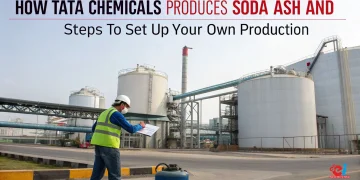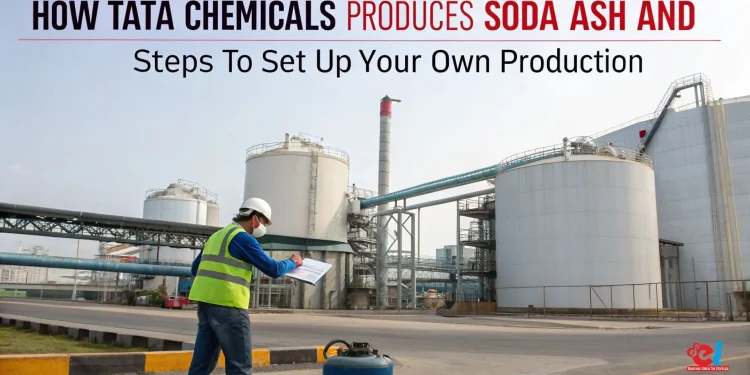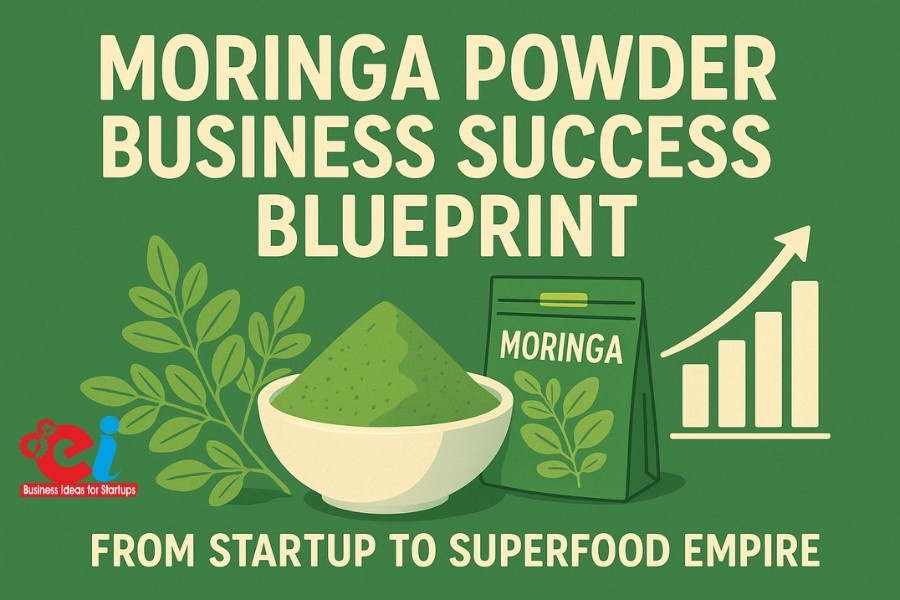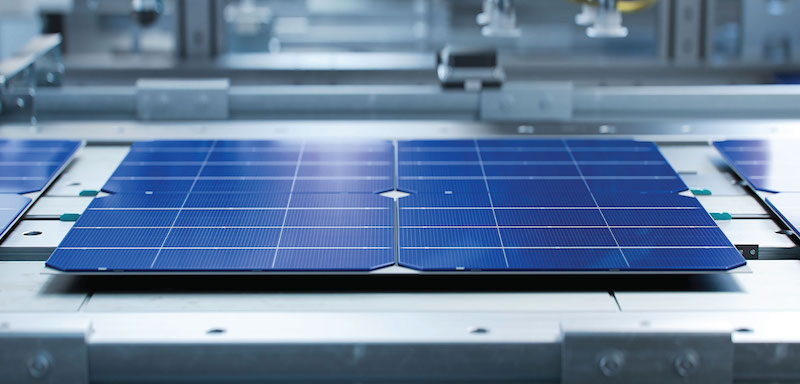From Basic Chemistry to Industrial Powerhouse
In the modern industrial age, it is rare for a material to be so widely utilised and important as soda ash (sodium carbonate). The clarity of glass and the softness of fabrics and the effectiveness of detergents, or the design of lithium batteries soda ash plays a crucial role in hundreds of different applications. It’s the unnoticed catalyst for modernity, and yet it’s one of the least discussed chemical substances.
In this thriving and quietly flourishing sector, Tata Chemicals has emerged not just as a top manufacturing company but also as a model of environmentally sustainable and technologically advanced production. With a rich history stretching across the coasts from Mithapur within Gujarat to the lands of mineral wealth in Kenya, Tata Chemicals has developed two highly efficient soda ash manufacturing processes – one that is based on natural extraction, the other based on the use of synthetic chemicals.
However, the real issue here is one of accessibility. It’s not a monopoly game for corporations with billions of dollars. If you have the right plan the right location, support for engineering and a long-term perspective MSMEs and entrepreneurs in India can set up modular soda ash facilities that are not just profitable but also competitive with exports and ESG-compliant.
Let’s look at the steps as well as the possibilities and, the most important thing how you can duplicate and apply this model locally.
Why Soda Ash Demand Is Booming Again
Soda ash has been around for centuries but the most innovative and fastest-growing areas drive the demand explosion of the 21st century. From the production of low-iron glass in solar panels, to the purification of brine used in lithium-ion batteries, the possibilities are growing with every passing year.
What was once a common product that was confined to windows and soaps is now vital to the clean energy transition including water security, electric mobility as well as pharmaceutical-grade salt production. All over Asia, Africa, and the Middle East are racing to ensure long-term supplies of soda ash particularly for food-grade eco-certified, high-purity varieties. The Indian market is alone experiencing an annual increase of 6-8 percent in demand. It is forecast to reach 7 million tonnes of metric tons in 2030.
In this competitive market, companies that have localized facilities, lower logistic costs, and sustainable methods have a major advantages in strategic planning.
Related: Start a Manufacturing Business of Soda Ash
Tata’s Two-Pronged Production Strategy: Natural and Synthetic
At the heart to Tata Chemicals’ global operations are two distinct but similar methods of producing soda ash. The natural route, which is used in Lake Magadi in Kenya, utilizes the earth’s natural deposits of trona, which is a naturally occurring compound composed of sodium carbonate and bicarbonate. This is where the company makes use of Dredging equipment to take the slurry of trona from lakebeds and then filter it and calcine it to create soda ash that has minimal environmental impact. It’s a naturally aligned, energy-efficient technique that cuts down on the requirement for synthetic reagents and large-scale chemical synthesis.
The synthetic method, used in Mithapur in Gujarat, is based on the Solvay process. This involves combining ammoniated brine and carbon dioxide in massive carbonation towers to produce sodium bicarbonate. The bicarbonate is then calcined using the rotary kilns in order to create soda Ash. This process is more suited for areas that have abundant limestone and brine (salt) as well as ammonia-based sources.
The real power of Tata’s approach lies in the efficiency integrations they have. Their Gujarat plant utilises waste heat recovery and a Zero Liquid Discharge (ZLD) system, as well as ammonia-regeneration units to limit emissions, conserve water and recycle chemicals in a closed-loop manner. This means that their products are affordable, sustainable and of pure quality, qualities that are sought-after by international buyers.
A Close Look at the Production Ecosystem
To establish a competitive soda ash manufacturing plant, understanding the complete process of engineering, not just the chemical steps is essential.
All begins with the acquisition of raw materials and then purification. Brine has to be dechlorinated, and free of heavy metals. Limestone needs to be crushed and sorted into homogeneous particle dimensions. Ammonia storage systems require precise protection from pressure and cooling protocols. The materials are then incorporated in the reactor’s main systems, where continuous or batch carbonation takes place under controlled temperature and pressure conditions.
When sodium bicarbonate has formed It is then separated by centrifugation and filtration. The crystals are dried before being sent to calcination ovens which operate with high temperature, removing away water and turning the substance into a light or dense soda ash. The final product is processed, cooled, graded, and packed and shipped out in bulk containers or bags according to the needs of the final use.
The chain is supported by various utilities: steam boilers and chillers gas scrubbers, dust filtering as well as water treatment facilities and control rooms that operate with the programmable logic controllers (PLCs) and SCADA devices. A fully integrated plant connects all of these elements together to create an unidirectional, monitored and optimised process of energy and materials.
Smart Technologies and Digital Manufacturing: Tata’s Edge
What is what sets Tata Chemicals apart in today’s market is their use of Industry 4.0 tools for chemical manufacturing. Through the integration of Digital Twin platforms, their engineers can simulate chemical reactions under various conditions in the real world, like the ambient temperature, humidity or load on equipment–before making real-time adjustments on the floor.
Advanced sensors that are embedded in the production line provide real-time information to AI-powered dashboards which allow for the prediction of monitoring, maintenance and process improvement and quality control. Water recovery, energy consumption percent, yield, and the levels of impurities are tracked constantly.
This kind of smart manufacturing isn’t restricted to huge-budget facilities. With the advent of software that is modular and sensor networks that are low-cost, even new factories with 50 to 100 TPD (tonnes per day) capacity can now incorporate basic digital monitoring right from the beginning.
The result is consistent quality of the product less downtime, better consumption of resources, and quicker decision-making.
Why This Sector Makes Sense for Indian Entrepreneurs
Entrepreneurs who wish to build long-term business that is backed by assets and has a steady demands, soda-ash is one of the top production opportunities available in India in the present.
In contrast to volatile consumer goods or high-risk tech platforms soda ash has a broad sectoral, B2B demand. Customers–whether they’re the glass factory, detergent makers or lithium producers — place orders on a regular basis and with regular cycles. This provides soda ash producers with steady cash flows, the ability to scale expansion, and an possibility of diversifying into products such as sodium bicarbonate sodium silicates, and even caustic soda.
In addition, India’s geographic advantage (coastal access as well as salt reserves and industrial zones) in conjunction with increasing export relations across India’s export markets of Middle East, Southeast Asia and Africa and gives local companies the opportunity to become world-class suppliers within 3-5 years of starting operations.
Today’s entrepreneurs can start with modular plants, expand by reinvesting profits and eventually integrate into premium soda ash derivatives all while retaining environmental sustainability, compliance along with digitalization as the primary principles.
Related: Profitable Opportunities in India’s Soda Ash Business Industry
Market Forecast for Soda Ash in India (2025–2030)
| Year | Projected Demand (MMT) | Key Growth Areas |
| 2025 | 4.8 | Glass, Detergents, Pharmaceuticals |
| 2026 | 5.2 | Lithium-ion, Solar Panels, FMCG |
| 2027 | 5.7 | Agrochemicals, Textiles, Export |
| 2028 | 6.1 | Clean Water, Paints, Plastics |
| 2029 | 6.5 | Battery Recycling, Sustainable Housing |
| 2030 | 6.9 | Specialty Chemicals, Green Tech Parks |
This trend is rising, and when combined with the government’s support for chemical manufacturing parks soda ash is now not only a viable business, but also a smart manufacturing investment.
What Ratan Tata chemicals Approach Can Teach Modern Founders
While the machinery and processes are crucial however, it’s the vision and the values that drive Tata Chemicals that truly make Tata Chemicals a model worth studying.
Under Ratan Tata’s direction The company didn’t just improve manufacturing, it transformed it into a human. He believed in resilience over time rather than short-term profits. This translates into investing in R&D and green technologies, building skills in remote regions and the creation of companies that help communities instead of exploiting resources.
His philosophy was straightforward: create something that will last, enhances lives, and is respected–not just making money.
For those who are entering the chemical sector, embracing the same mindset is to invest in ethical sources and transparent operations, as well as accountable emissions control, as well as local jobs. These aren’t only soft values, they are essential elements in a world that is increasingly controlled through ESG structures and assessment.
For more information check our video about this topic
How NPCS Helps You Build a Profitable Soda Ash Manufacturing Plant
We are NIIR Project Consultancy Services (NPCS) we are specialized in helping entrepreneurs bring their industrial manufacturing concepts to fruition. With over a decade of experience in the pharmaceutical, chemical and food industries We offer complete services from conception to commissioning.
No matter if you’re considering the construction of a soda ash plant in a greenfield or extending the existing plant, our services include:
- Complete feasibility studies that are specifically tailored to your region and budget.
- Specifications for equipment and processes are based on established models such as the Solvay method
- Plant layout, utility integration and guidance on pollution control
- Assistance with licensing, EIA clearances, and the selection of vendors
- Mentoring for startup teams along with compliance and training available to team members of the plant
Our aim is to make your idea not only viable, but also profitable as well as sustainable and scalable.
Conclusion: From Imitation to Innovation
Tata Chemicals didn’t become a world leader simply by copying. They achieved this by innovating, iterating and investing for a reason. Their experience shows that even in conventional industries such as soda-ash production, there’s still room for world-class processes, sustainable practices and a smart growth strategy.
The most important thing isn’t whether you could replicate their approach, but if you’re prepared to invest in building something that is important.
With the right information as well as the right partners and the right attitude You don’t just make soda ash, you create a lasting.


























